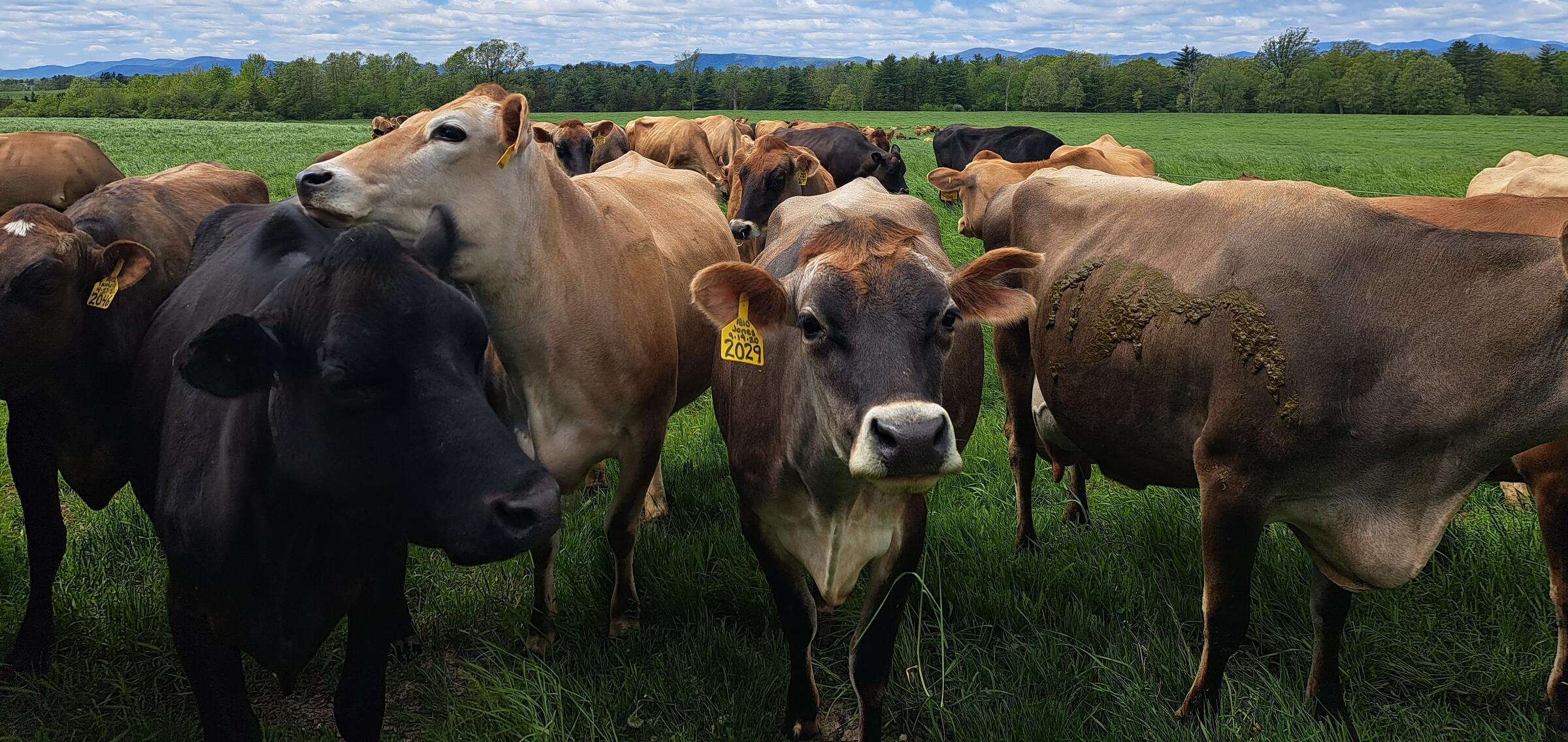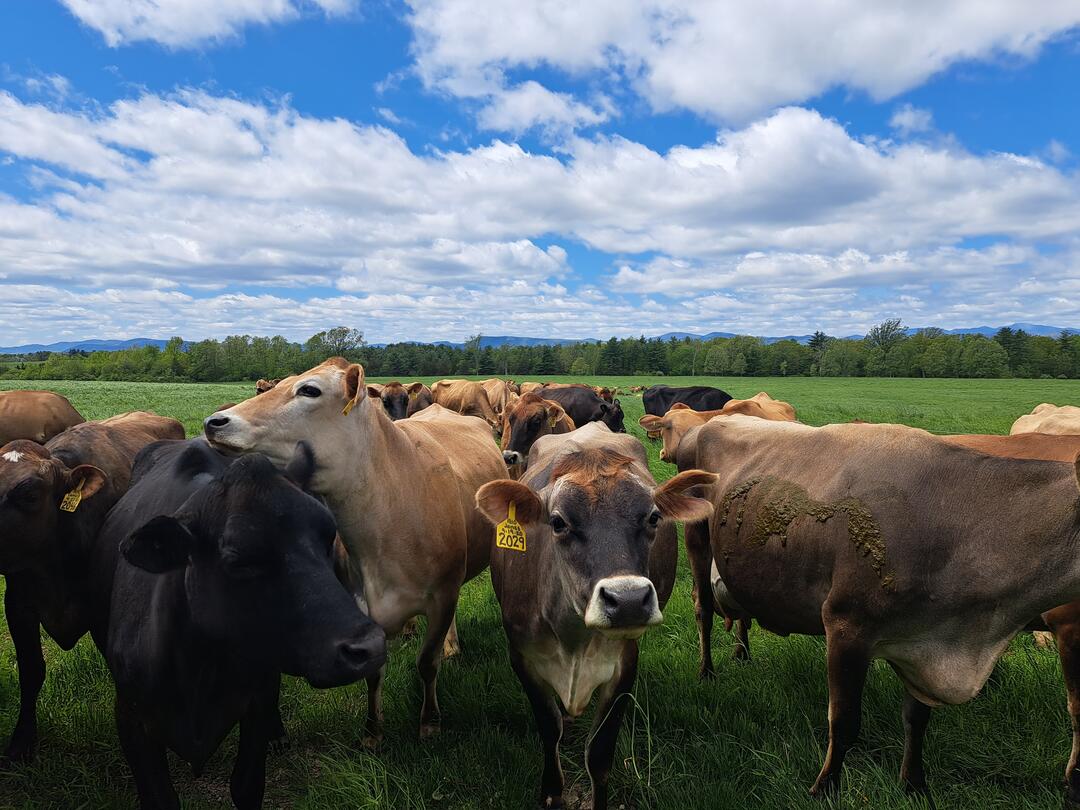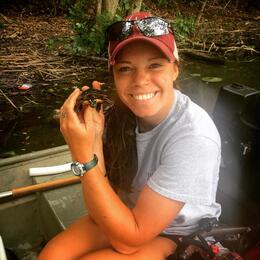Cows and birds, a “surprising” combination
Typically, we wouldn’t think cow pasture and bird habitat mix. In a global sense, an image that might come to mind is clearing the Amazon’s rainforest to pasture beef cattle. Closer to home in the Northeast, some hayfields that grassland birds nest in must be mowed early and frequently in order for farmers to provide enough high-quality protein-rich forage for their dairy cows through the winter. However, land uses for livestock vary drastically and so do their impacts on birds. Audubon Vermont is focusing on several strategies, including certain approaches to grazing, in which agricultural and conservation objectives are compatible. In fact—grassland bird habitat may actually depend on grass-fed cows to maintain an open landscape that would otherwise be lost.
Where did the meadowlarks go?
A recurring theme has emerged from Audubon’s work with concerned Vermont farmers in our Bird and Bee Friendly Farming Program the last several years: there are significantly fewer birds than they or their parents and grandparents remember seeing and hearing in years past on their farms. Some species have disappeared altogether. Gone are the days of hearing a relentless “Whip-poor-will! Whip-poor-will! Whip-poor-will!” on muggy summer evenings. If such a rare song is heard these days, it’s met first with suspicion before nostalgia. Since Eastern Meadowlarks are some of the first migratory grassland birds to return for breeding season (sometimes as early as March), their lazy whistle song “seeyou-seeyeer!” used to be a distinct sign of spring, now replaced with a haunting absence. It’s true— a few years ago, researchers confirmed there are nearly three billion fewer birds in North America than there were 50 years ago, meaning a loss of 1 in 4 breeding birds since 1970. Grassland birds in particular have experienced some of the fastest and greatest declines, with several species such as the Bobolink and Eastern Meadowlark further identified as “tipping point” species. This means they have lost half or more of their populations in the last 50 years and are on track to lose another half in the next 50 years if conservation action is not taken.
The mutual benefit of birds to farms and farms to birds
Not only are iconic grassland birds a beautiful and welcome sight and sound every spring and summer, they also provide important on-farm services such as pest control. Diverse groups of birds provide balance by reducing populations of potentially harmful pest insects like caterpillars, weevils, cutworms, beetles, and flies that can negatively impact crop yields and the health and welfare of livestock animals. At the same time, grassland birds, especially in the northeast, depend on human-altered agricultural landscapes where their preferred grassland habitats are actively maintained as open, grass-dominant vegetation. Grassland bird habitat is decreasing across the country with the transition of pasture or hayfields into other crops or land use types as well as the overall intensification of agricultural practices. Vermont is no different—many farms have been abandoned over the last several decades as the agricultural industry shifts to meet changing needs and conditions in the market. Those grasslands that remain are increasingly fragmented, offering lower quality habitat and increased predation pressure with more edges. So naturally, one way to help these birds might simply be to ensure our farmers that graze and hay their land continue maintaining these open spaces, and give them to options to do so with birds in mind.
In general, good pasture management to maintain soil health and forage diversity, nutrition, and production with ample rest and regrowth, is also good for many bird species. Bobolinks, meadowlarks, harriers, and several sparrow species such as Savannah, Vesper, and Grasshopper Sparrows are all birds that nest directly on the ground in grasslands, but many other species, such as Tree and Barn Swallows, American Kestrels, kingbirds, bluebirds, and dozens of others, forage in or otherwise benefit from grasslands. Sustainable grazing practices that enable long-term viability of grasslands with adequate maintenance of vegetative structure and adequate periods of rest without disturbance, can provide birds with essential breeding, shelter, and forage requirements.
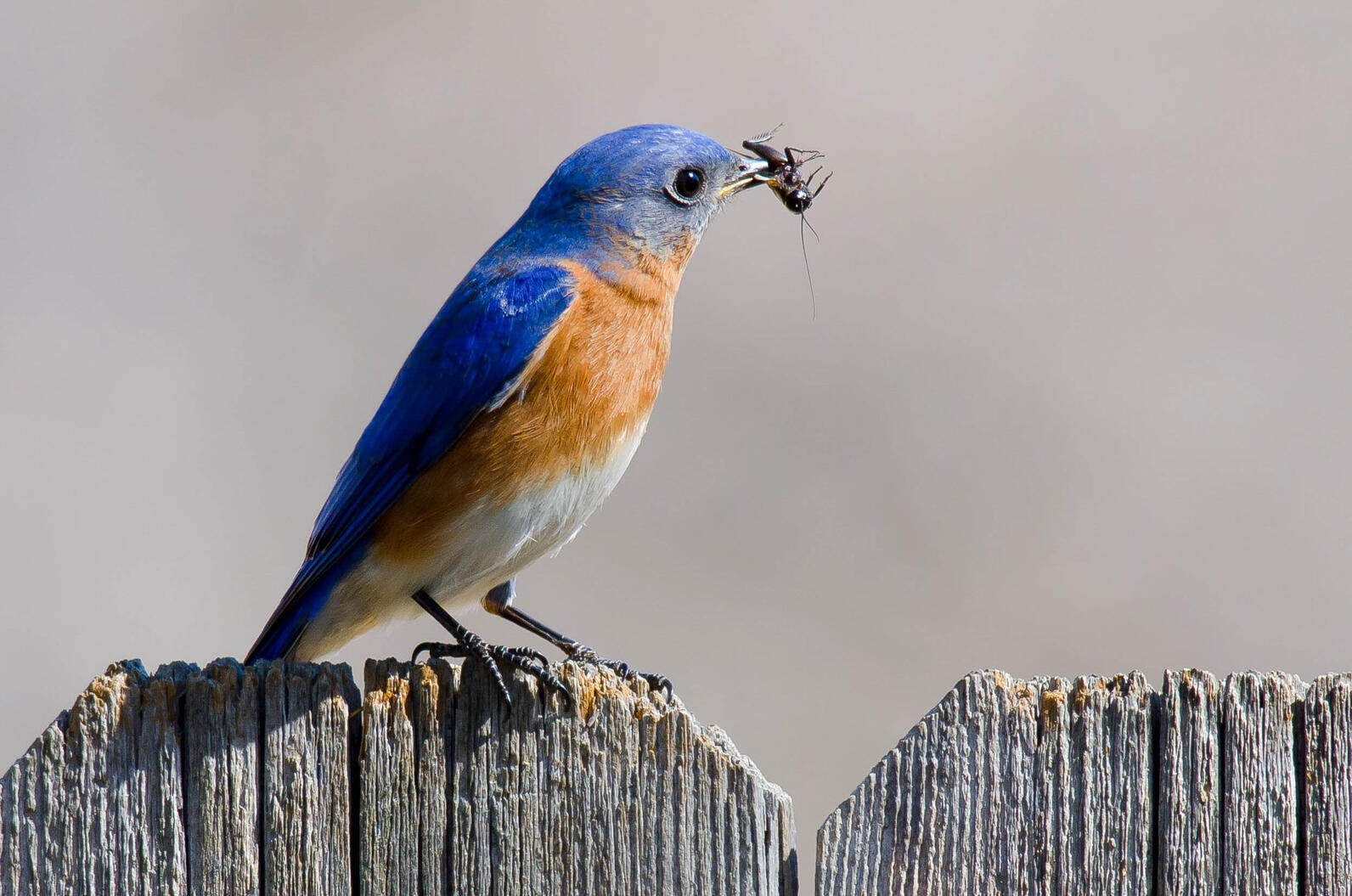
General grassland bird ecology and ideal habitat needs
First, it’s good to know what grassland birds need. Different species prefer varying characteristics of grass height, density, and minimum area, so not all species are likely to occur on one farm, but there are some general concepts to be familiar with when encouraging most grassland birds.
- Habitat size: Bigger is better. Fields larger than 25 acres will be most attractive. Bobolinks and Savannah Sparrows may use fields as small as 7-10 acres, but Eastern Meadowlarks prefer at least 20 acres or more.
- Field shape: Square, rectangular, or circular fields with a high interior area and low edge effect are better than long, narrow, or irregular shaped fields. While birds often forage in all parts of a grassland, the greatest number of nests are in the central section.
- Vegetation composition: Grass dominant, of course! Fields with 50 to 75 percent or more grass cover at least 12 inches tall with some forbs (vetch, wildflowers, and others) and very few to no woody plants is most beneficial.
- Location, location, location: Grasslands surrounded by similar fields and an open landscape view on a hilltop are preferred over an isolated field surrounded by forest or thick hedgerows. Many species typically return to the same areas to nest year after year, even if those fields are hayed and they are not successful, which can lead to an “ecological trap.”
- Breeding activity: Timing is everything. Eastern Meadowlarks, American Kestrels, and Norther Harriers arrive earlier than Bobolinks and different species have a variety of nesting habits and timelines, but there are some overlapping critical windows in May and June especially.
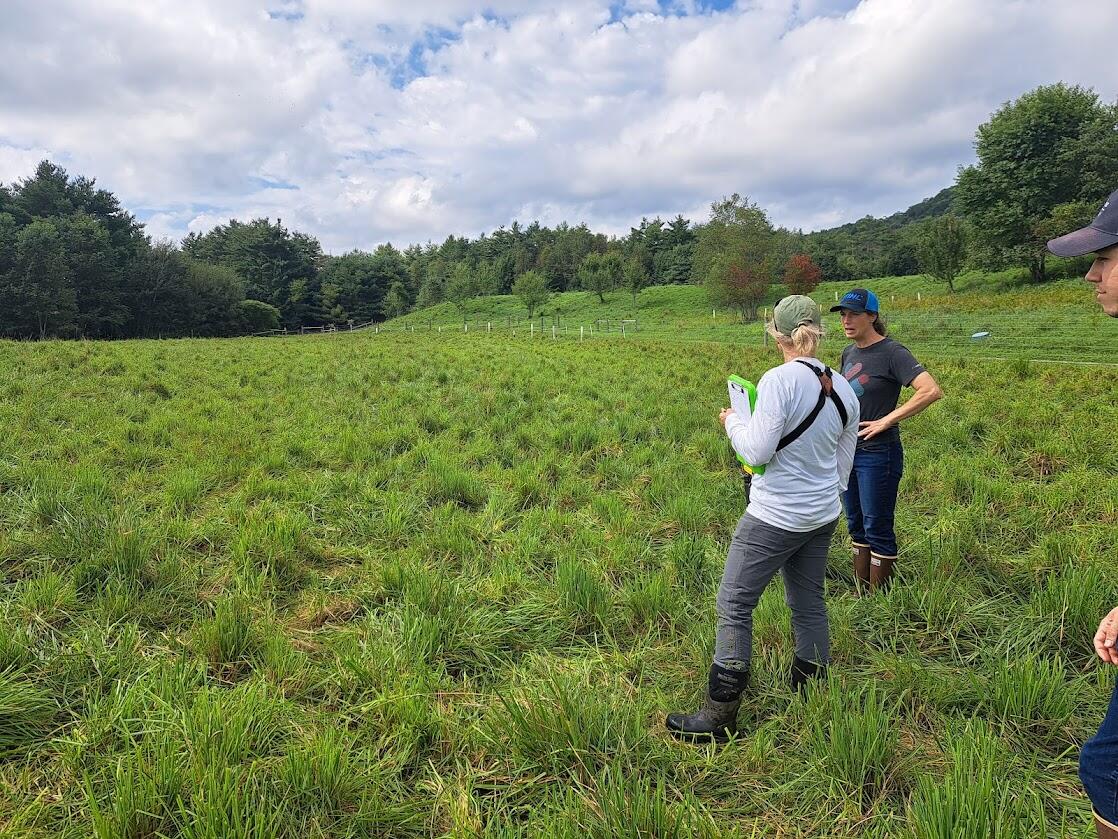
Exploring the synergies of grazing and birds
This past year, Audubon collaborated with Organic Valley to learn more about dairy farm operations to better inform our Bird-friendly Farming, Bobolink Project, and certified Conservation Ranching programs and beyond. Fencing in pasture systems can provide favorable conditions for birds with posts serving as ideal singing perches and electric fencing potentially reducing predation by raccoons, skunks, foxes, and coyotes. More importantly, we’re starting to understand that grass-fed pastured livestock operations in particular that use intensive rotational grazing systems can maintain production and forage quality for their animals while simultaneously providing significant habitat for grassland birds. Generally, rotational grazing is a method where pastures are subdivided into many smaller areas (referred to as paddocks), only a small strip is grazed at a time while the remainder of the pasture “rests” and the herd is moved very frequently. In contrast, continuous grazing gives cows access to the whole area for long periods. There are advantages and disadvantages of each method for practical, economic, and ecological reasons we will explore more in part two of this article series. However, it’s important to note that we’re finding the time cows have access to an area to graze has a larger impact on birds and habitat quality than animal stocking density and area size. The structural diversity in vegetation offered by systematic movement and concentration of animals in areas with long rest periods between grazing events is beneficial to several grassland bird species that have different preferences for habitat characteristics. Cows, sheep, horses, and other herbivores all graze differently, and within cattle livestock, cows for dairy and beef have drastically different nutrient requirements affecting grazing. Audubon Vermont has learned mainly from dairy farmers and find that grassland birds generally produce more young in rotationally grazed systems than in early and frequently cut hayfields, but less than in hayfields that are cut late in the season. So in a sense, rotational grazing can be thought of as a balanced approach to both conservation and agriculture. Plus, because cattle wander less in these systems, they have less opportunity to trample ground nests of birds. Bottom line, rotational grazing can be good for birds.
The power of stewardship in farm management
While we understand that forage production is not always compatible with grassland birds, some strategies can provide ecological benefits with low economic impact. We depend on our farmers to sustain us. No one is a better steward of their land or is able to notice subtle changes over time as acutely as the farmers that are on-the-ground every day. There is a growing awareness and interest in the value that biodiversity brings to farms and many are working hard to think about ways to incorporate those values in a sustainable economic model. There is great power in small actions by individual landowners that can have a global impact on bird conservation when vulnerable species have the opportunity to reproduce successfully in their preferred habitats. Stay tuned for the second part of this series in which we’ll dive deeper into details of rotational grazing benefits and highlight examples of small adjustments and actions land stewards and farmers can consider taking within the means of their operation to support these birds and tip their population trend upward.

